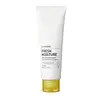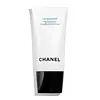What's inside
What's inside
 Key Ingredients
Key Ingredients

No key ingredients
 Benefits
Benefits

 Concerns
Concerns

 Ingredients Side-by-side
Ingredients Side-by-side

Water
Skin ConditioningGlycerin
HumectantPotassium Myristate
EmulsifyingPotassium Laurate
EmulsifyingPotassium Stearate
CleansingMyristic Acid
CleansingLauryl Hydroxysultaine
CleansingPotassium Palmitate
EmulsifyingGlycol Distearate
EmollientLauric Acid
CleansingStearic Acid
CleansingPolyquaternium-22
Palmitic Acid
EmollientLimonene
PerfumingGuar Hydroxypropyltrimonium Chloride
Skin ConditioningCitrus Junos Peel Oil
AstringentDisodium EDTA
Cocos Nucifera Oil
MaskingButylene Glycol
HumectantCoco-Caprylate/Caprate
EmollientCitrus Junos Peel Extract
Skin ConditioningWater, Glycerin, Potassium Myristate, Potassium Laurate, Potassium Stearate, Myristic Acid, Lauryl Hydroxysultaine, Potassium Palmitate, Glycol Distearate, Lauric Acid, Stearic Acid, Polyquaternium-22, Palmitic Acid, Limonene, Guar Hydroxypropyltrimonium Chloride, Citrus Junos Peel Oil, Disodium EDTA, Cocos Nucifera Oil, Butylene Glycol, Coco-Caprylate/Caprate, Citrus Junos Peel Extract
Water
Skin ConditioningGlycerin
HumectantSodium Palmitate
CleansingSodium Stearate
CleansingSodium Methyl Cocoyl Taurate
CleansingPolyethylene
AbrasivePotassium Palmitate
EmulsifyingPotassium Stearate
CleansingSodium Laurate
CleansingPotassium Laurate
EmulsifyingPalmitic Acid
EmollientStearic Acid
CleansingPotassium Myristate
EmulsifyingLauric Acid
CleansingSodium Myristate
CleansingPEG-3 Distearate
EmulsifyingSalicornia Herbacea Extract
Skin ConditioningAlgae Extract
EmollientSodium Laureth Sulfate
CleansingCaprylic/Capric Triglyceride
MaskingMyristic Acid
CleansingParfum
MaskingSodium Cocoyl Isethionate
CleansingWater, Glycerin, Sodium Palmitate, Sodium Stearate, Sodium Methyl Cocoyl Taurate, Polyethylene, Potassium Palmitate, Potassium Stearate, Sodium Laurate, Potassium Laurate, Palmitic Acid, Stearic Acid, Potassium Myristate, Lauric Acid, Sodium Myristate, PEG-3 Distearate, Salicornia Herbacea Extract, Algae Extract, Sodium Laureth Sulfate, Caprylic/Capric Triglyceride, Myristic Acid, Parfum, Sodium Cocoyl Isethionate
 Reviews
Reviews

Ingredients Explained
These ingredients are found in both products.
Ingredients higher up in an ingredient list are typically present in a larger amount.
Glycerin is already naturally found in your skin. It helps moisturize and protect your skin.
A study from 2016 found glycerin to be more effective as a humectant than AHAs and hyaluronic acid.
As a humectant, it helps the skin stay hydrated by pulling moisture to your skin. The low molecular weight of glycerin allows it to pull moisture into the deeper layers of your skin.
Hydrated skin improves your skin barrier; Your skin barrier helps protect against irritants and bacteria.
Glycerin has also been found to have antimicrobial and antiviral properties. Due to these properties, glycerin is often used in wound and burn treatments.
In cosmetics, glycerin is usually derived from plants such as soybean or palm. However, it can also be sourced from animals, such as tallow or animal fat.
This ingredient is organic, colorless, odorless, and non-toxic.
Glycerin is the name for this ingredient in American English. British English uses Glycerol/Glycerine.
Learn more about GlycerinLauric Acid is a fatty acid or lipid. About half of fatty acids in coconut oil is lauric acid.
This ingredient helps hydrate and sooth skin. As a humectant, it helps trap moisture. It also aids in cleaning and enhancing the texture of products.
Lauric acid may not be Malassezia folliculitis, or fungal acne, safe.
Learn more about Lauric AcidMyristic Acid is a saturated fatty acid. It is naturally found in milk fat. Other sources include palm oil, coconut oil, and butter fat.
Myristic Acid is an emulsifer and cleanser. As an emulsifer, it stabilizes a product by preventing ingredients from separating. Myristic Acid helps clean your skin by acting as a surfactant. It tends to gather oil and dirt on your skin to be easily rinsed away.
One study from 2021 found Myristic Acid to have anti-inflammatory properties.
Learn more about Myristic AcidPalmitic Acid is a fatty acid naturally found in our skin and in many plant and animal sources. In cosmetics, it is usually derived from palm oil. It serves many purposes in skincare, acting as a cleanser, emollient, and emulsifier.
As an emollient, palmitic acid helps soften and smooth the skin by preventing water loss. In cleansers, it helps remove oil and dirt while creating foam.
Its emulsifying properties help stabilize products by keeping water and oil-based ingredients from separating.
This may not be suitable for fungal acne-prone skin, as fatty acids like this can sometimes trigger breakouts in sensitive individuals.
Learn more about Palmitic AcidWe don't have a description for Potassium Laurate yet.
We don't have a description for Potassium Myristate yet.
We don't have a description for Potassium Palmitate yet.
We don't have a description for Potassium Stearate yet.
Stearic Acid is a fatty acid. It is an emollient, emulsifier, and texture enhancer.
As an emollient, stearic acid helps soften skin. It aids the skin's protective barrier by preventing water loss. It also provides a gentle cleansing effect without stripping away natural oils.
Stearic acid may also be used to enhance the texture of products. It can add volume and stabilize ingredients such as water and oil. This can help water and oil ingredients from separating.
Sources of stearic acid include animal or vegetable fats/oils such as coconut or shea. It can be naturally found in butter, cocoa butter, shea butter, vegetable fats, and animal tallow.
This ingredient may not be Malassezia folliculitis, or fungal-acne safe.
Learn more about Stearic AcidWater. It's the most common cosmetic ingredient of all. You'll usually see it at the top of ingredient lists, meaning that it makes up the largest part of the product.
So why is it so popular? Water most often acts as a solvent - this means that it helps dissolve other ingredients into the formulation.
You'll also recognize water as that liquid we all need to stay alive. If you see this, drink a glass of water. Stay hydrated!
Learn more about Water